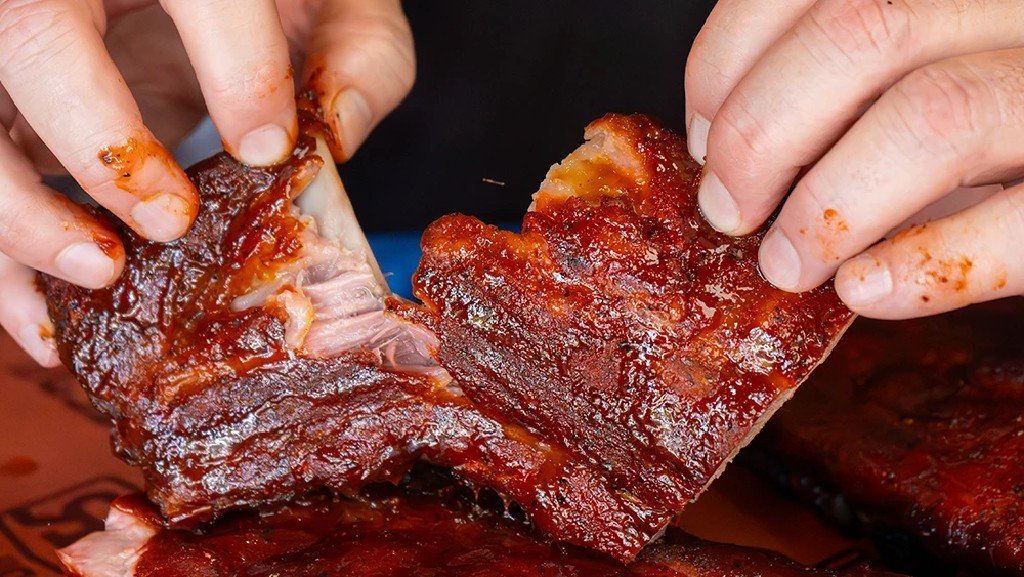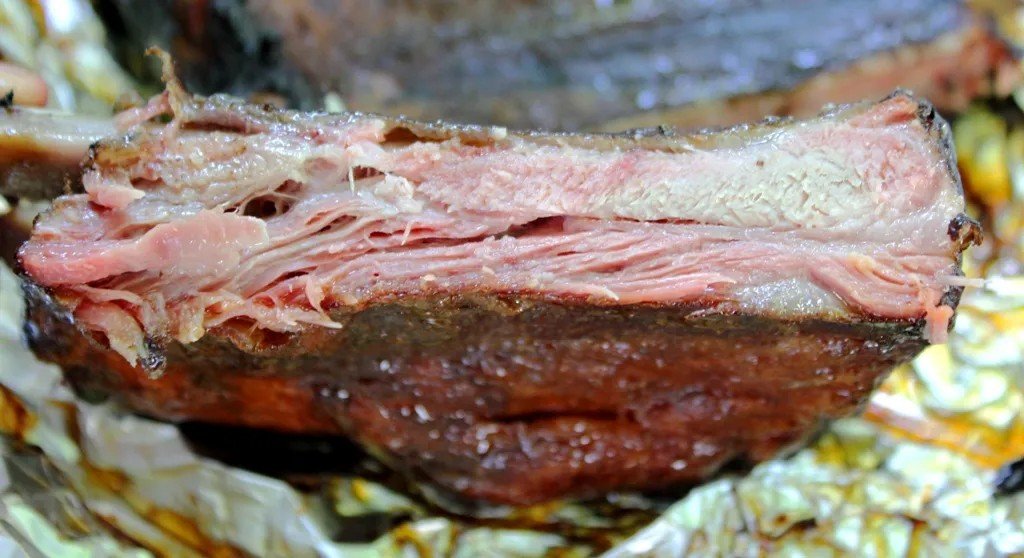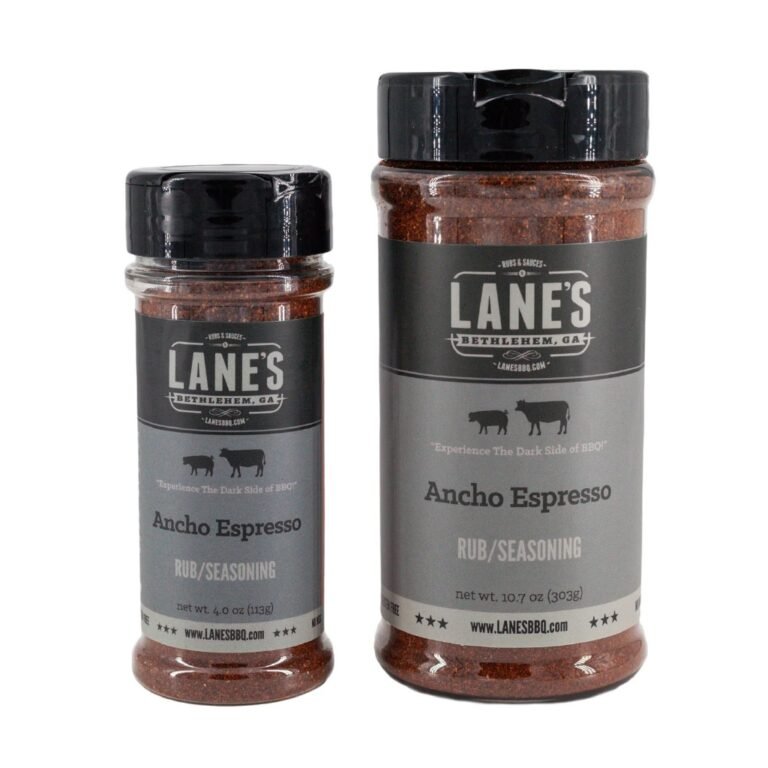Why Are Pork Ribs Pink When Cooked? Safe to Eat or Undercooked?
If you’ve cooked or eaten pork ribs, you might have seen something interesting: the meat often stays pinkish, even when it’s fully cooked. This can be puzzling, especially since we’re often taught that pink meat indicates undercooking. What if I told you pink pork ribs can be safe to eat? They result from interesting scientific processes.
So, why do pork ribs stay pink after cooking? Is it a sign that they’re undercooked, or is there more to the story? Could the answer lie in the chemistry of meat, the cooking method, or even the ingredients used?
In this article, we’ll explore the science of this culinary mystery. We’ll look at what makes pork pink and clear up common myths about cooking it. By the end, you’ll see why your ribs stay pink. You’ll also learn tips to boost your cooking skills and confidence in the kitchen.
Whether you love barbecue or just enjoy good food, this article will change how you cook pork ribs.
Why Are Pork Ribs Tinted Pink When Cooked?

Pink color in pork and poultry can happen when myoglobin in the meat reacts to heat while cooking.
You can really see this when you smoke or cook with specific woods. They can add a pinkish color called a “smoke ring.””
“Opening a family-style restaurant with comfort food like mac’ n’ cheese, ribs and burgers has always been my dream.”
– Bridget Hall, American Fashion Model
It’s important to use accurate temperature measurements, not just color, to check if meat is done and safe to eat.
| Related post: How Long Are Pork Chops Good In The Freezer? |
Curing Agents and Their Impact
Curing agents play a significant role in the color and texture of pork ribs. Curing agents such as salt, nitrates, and nitrites are common in processed meats. They boost flavor, keep freshness, and stop bacteria from growing. These compounds work with proteins in pork. They help keep the meat’s color. This often leads to a pink or reddish hue, even after cooking.
When you cure or smoke pork ribs, nitrates and nitrites interact with myoglobin. Myoglobin is the protein that gives meat its natural red color. This reaction makes a stable pink color. It stays bright even when the meat is at a safe internal temperature. Unlike raw or undercooked pork, which may appear unevenly pink, cured ribs will have a more uniform pinkish tone throughout.
This effect is clear in smoked or barbecued ribs. Here, smoke and curing salts create the unique “smoke ring” just under the surface. Understanding this process helps you tell if ribs are safely cooked or need more time to reach the right temperature.
For safety, you always check pork ribs with a meat thermometer. Color alone doesn’t guarantee safety. Ensure ribs reach an internal temperature of 145°F (63°C) and rest for three minutes. This makes them safe to eat, even if they look pink.
How Does Cooking Technique Influence the Color of Pork Ribs?
Cooking techniques greatly influence the color of the finished dish. Grilling, for example, often imparts charred or caramelized exteriors due to direct exposure to high heat.
Smoking can create a pink “smoke ring” in meats like pork or beef. This happens when the meat’s myoglobin reacts with the wood smoke.
Similarly, slow-cooking methods like braising can retain more of the meat’s natural color, while high-heat searing can produce a rich brown crust.
Are There Natural Pigments In Pork That React To Heat?
Yes, pork [2] contains a natural pigment called myoglobin, responsible for its reddish-pink hue in its raw state. When exposed to heat during cooking, myoglobin undergoes chemical changes.
This pigment can change based on pH, oxygen levels, and cooking temperature. It might darken, turn brown, or stay pinkish.
This reaction happens a lot when meat is smoked or cooked in certain ways. It can make the meat look pink, even if it’s fully cooked.
Does the Cut of the Pork Affect Its Color After Cooking?
Yes. The specific cut of pork can influence its color after cooking. Different cuts have varying levels of myoglobin, fat content, and connective tissue.
Muscles used more often, like the pork shoulder, have more myoglobin. This makes them look darker when cooked. In contrast, muscles like the loin, which are used less, appear lighter.
Fat marbling and connective tissue affect cooking and appearance. Well-marbled cuts often yield juicier, tastier meat that may stay a bit pink.
| Check out: How Long Does Pork Belly Last in the Fridge? |
What Should We Trust: Color or Temperature?
Color can help you at first, but temperature is the best way to ensure cooked meat is safe and perfect.
We often associate a pink hue with undercooked meat and a brown or white appearance with a fully cooked status. However, this can be misleading.
“In the dance of heat and meat, a pink hue is pork’s sweetest feat; yet in temperature, truth does speak, ensuring our ribs are perfectly unique.”
– Eat Gap Restaurant & Food Advice
Factors like the meat’s exposure to oxygen, pH, or even the cooking method (such as smoking) can impact its color.
For instance, smoked meats often have a pinkish “smoke ring,” and specific cuts of pork might retain a pink color even when fully cooked.
On the contrary, temperature provides a more definitive and scientific measure of doneness.
A meat thermometer helps make sure meat hits a safe internal temperature. This temperature kills harmful germs like Salmonella and E. coli.
Different meats have safe cooking temperatures. These ensure safety, flavor, and texture.
Food Safety Concerns
Seeing pink pork ribs after cooking can be concerning, but it doesn’t always mean they’re undercooked. The pink color is often due to factors like smoking, curing agents, or natural meat proteins rather than rawness. However, food safety is essential, and knowing how to check for doneness is crucial.
Use a meat thermometer to check that your pork ribs reach a safe internal temperature. Don’t just rely on color. The USDA recommends cooking pork to 145°F (63°C) and letting it rest for at least three minutes. For ribs, many pitmasters prefer a higher temperature—190–203°F (88–95°C)—to achieve a tender, fall-off-the-bone texture.
Other signs of doneness include meat pulling away from the bone and a slight bend when lifted with tongs. If in doubt, always prioritize temperature over appearance.
Follow these guidelines to enjoy tasty, juicy ribs while staying safe from food risks.
FAQs on Pork Ribs Pink When Cooked
Is it safe to eat pork while still pink near the bone?
Yes, pink pork near the bone can be safe to eat. It must reach an internal temperature of 145°F (63°C). Also, let it rest for three minutes after cooking.
The pink hue can result from myoglobin, a protein in meat. Always use a meat thermometer to ensure safety rather than relying solely on color.
How do you know if your ribs are overcooked?
If your ribs are overcooked, they’ll exhibit a few telltale signs. Rather than being tender and juicy, they’ll become dry and tough, making them harder to bite or pull apart.
Overcooked ribs might also have a burnt or excessively charred exterior. While falling off the bone is often seen as a sign of perfect ribs, they can be overcooked if the meat falls off without resistance.
Ideally, ribs should have a slight cling to the bone but release quickly when bitten.
Final Thoughts
The pink color seen in cooked pork ribs doesn’t mean they are undercooked, as many believe.
It’s mainly due to chemical reactions with myoglobin, a natural meat pigment. This happens, especially during certain cooking methods, like smoking.
Understanding this allows for a more informed approach to cooking and consuming pork ribs.
Always use a meat thermometer. Trust the temperature, not the color, for safety and great taste.
References:
- https://www.sciencedirect.com/science/article/pii/S175173112100207X
- https://www.healthline.com/nutrition/foods/pork

Kathy is a restaurateur, artist, and blogger. After spending more than 10 years in the restaurant industry, she has decided to go digital and share her expertise and experience online.







